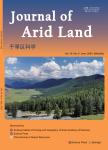Clones or no clones:genetic structure of riparian Populus euphratica forests in Central Asia
Clones or no clones:genetic structure of riparian Populus euphratica forests in Central Asia作者机构:Senckenberg German Entomological Institute Eberswalder StraBe 90 Muncheberg 15374 Germany Department of Zoology Faculty Natural Sciences I Institute of Biology Martin Luther University Halle-Wittenberg Halle (SaMe) 06099 Germany Faculty of Regional and Environmental Sciences University of Trier Campus II BehringstraBe 21 Trier 54296 Germany Xinjiang Institute of Ecology and Geography Chinese Academy of Sciences Urumqi 830011 China Sino-German Joint Research Center for the Management of Ecosystems and Environmental Changes in Arid Lands (MEECAL) Urumqi 830011 China
出 版 物:《Journal of Arid Land》 (干旱区科学(英文版))
年 卷 期:2018年第10卷第5期
页 面:750-766页
核心收录:
学科分类:0710[理学-生物学] 0830[工学-环境科学与工程(可授工学、理学、农学学位)] 0709[理学-地质学] 08[工学] 0829[工学-林业工程] 0708[理学-地球物理学] 0815[工学-水利工程] 0705[理学-地理学]
基 金:funded by the German Federal Ministry of Education and Research(01LL0918K)
主 题:clonality floodplain forest ground water phreatophyte population genetics rejuvenation salinity
摘 要:Many riparian(Tugai) forests growing along rivers in arid and hyper-arid regions of Central Asia are dominated by the Euphrates poplar(Populus euphratica). Besides generative reproduction, which is only possible upon flooding events and at a distance to the groundwater of less than 2 m, this phreatophytic tree species also reproduces vegetatively by forming clones that can cover land surface areas of several hectares. Along a gradient of groundwater distances, we investigated whether the fraction of clones in P. euphratica stands(1) increases with increasing distance to the water table;(2) is higher if supplied with water via river cut-offs; and(3) approaches 100% at a short distance to the groundwater, but at high salt concentrations in the upper soil layers, which would prevent germination and establishment of seedlings. AFLP(Amplified Fragment Length Polymorphism) analyses were conducted on leaf samples taken from mature P. euphratica trees growing at the fringes of the Taklimakan Desert in stands with different distances(2–12 m) to the groundwater at two plots at the middle and the lower reaches of the Tarim River and in a stand close to Ebinur Lake, Xinjiang, China. Genetic diversity was large among plots, but considerably smaller within plots. We found the highest genetic diversity(caused by regeneration from seeds) at plots that have a short distance to the groundwater or are supplied with additional water. There was no significant relationship between groundwater distance and clonal fraction. All investigated trees at the saline Ebinur Lake site belonged to one single clone. Our results demonstrate that the genetic pattern of this widespread species is not easily predictable even over small distances as it is a result of a complex interplay of stand history and dispersal of propagules(pollen, seeds, and vegetative diaspores) by wind and water. In conservation and restoration schemes, P. euphratica stands with a high genetic diversity and stands that grow at short distances to the water table and are regularly subjected to flooding(which favors generative over clonal reproduction) should be prioritized.



